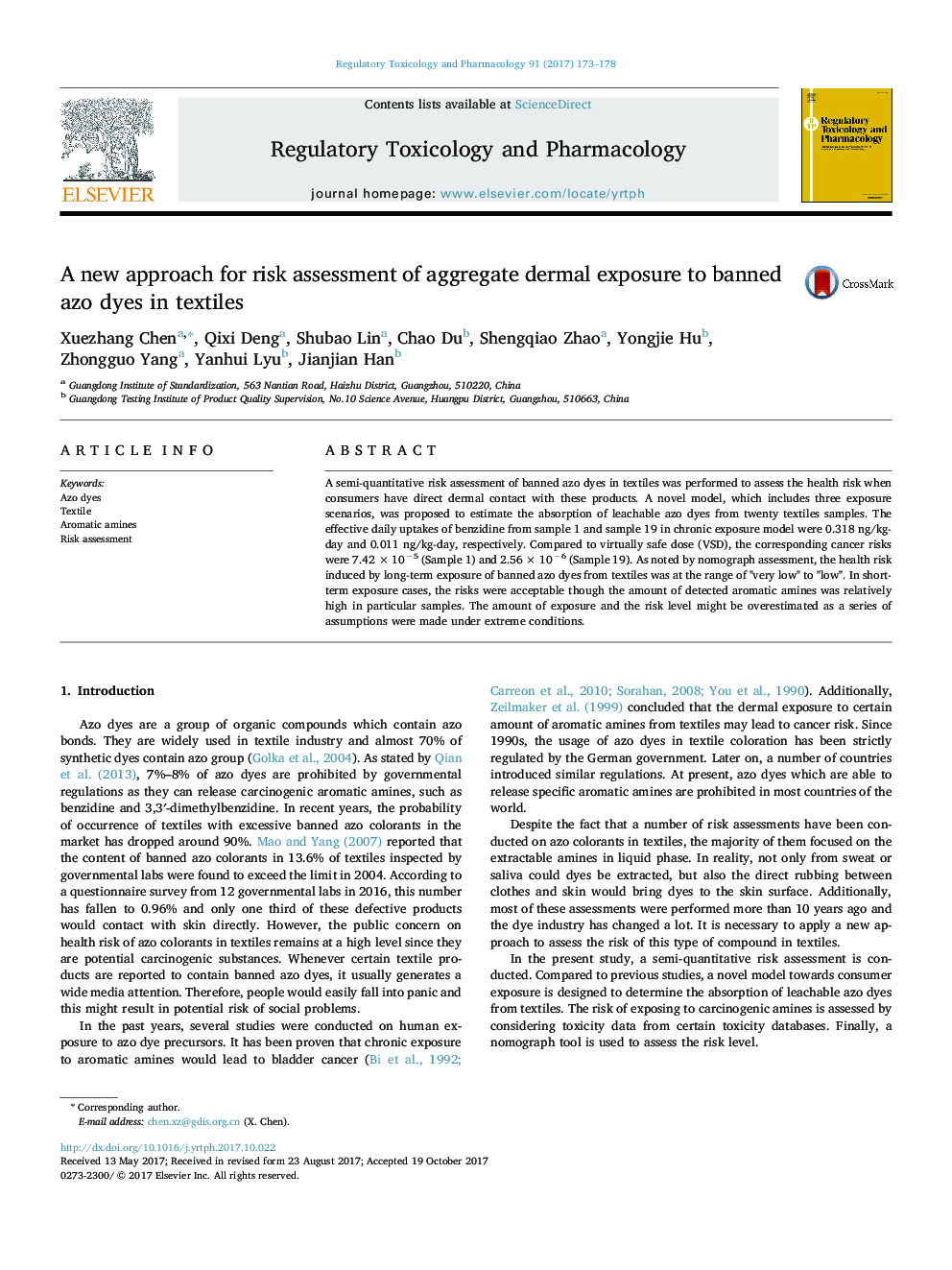| Article ID | Journal | Published Year | Pages | File Type |
|---|---|---|---|---|
| 8551975 | Regulatory Toxicology and Pharmacology | 2017 | 6 Pages |
Abstract
A semi-quantitative risk assessment of banned azo dyes in textiles was performed to assess the health risk when consumers have direct dermal contact with these products. A novel model, which includes three exposure scenarios, was proposed to estimate the absorption of leachable azo dyes from twenty textiles samples. The effective daily uptakes of benzidine from sample 1 and sample 19 in chronic exposure model were 0.318Â ng/kg-day and 0.011Â ng/kg-day, respectively. Compared to virtually safe dose (VSD), the corresponding cancer risks were 7.42Â ÃÂ 10â5 (Sample 1) and 2.56Â ÃÂ 10â6 (Sample 19). As noted by nomograph assessment, the health risk induced by long-term exposure of banned azo dyes from textiles was at the range of "very low" to "low". In short-term exposure cases, the risks were acceptable though the amount of detected aromatic amines was relatively high in particular samples. The amount of exposure and the risk level might be overestimated as a series of assumptions were made under extreme conditions.
Related Topics
Life Sciences
Environmental Science
Health, Toxicology and Mutagenesis
Authors
Xuezhang Chen, Qixi Deng, Shubao Lin, Chao Du, Shengqiao Zhao, Yongjie Hu, Zhongguo Yang, Yanhui Lyu, Jianjian Han,
